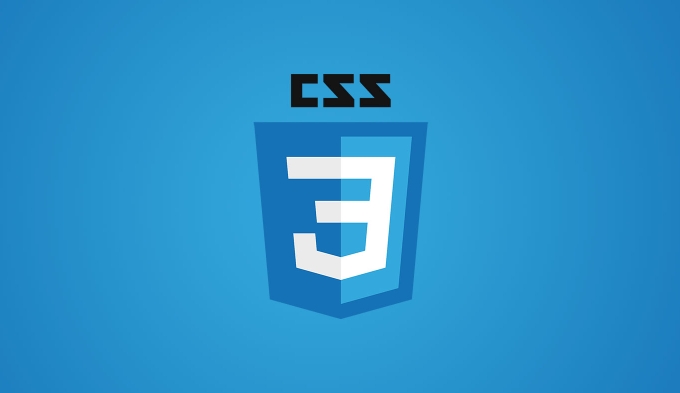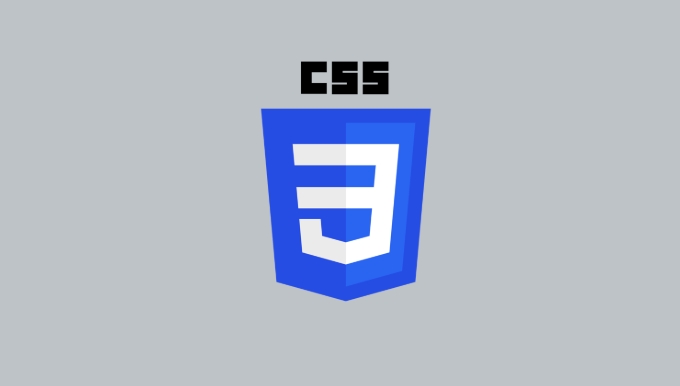The main difference between em and rem in CSS is their reference point: em is relative to the font size of its own element or inherited from a parent, while rem is always relative to the root html element’s font size. 1. em scales based on the local font size, which can lead to compounding effects in nested elements. 2. rem provides consistent sizing by always referencing the root font size, avoiding unexpected scaling. 3. Use rem for layout spacing like margins, padding, and headings that should remain uniform. 4. Use em for internal component sizing where proportional scaling makes sense. 5. Both units support accessibility when not set with absolute values.

When styling web pages with CSS, choosing the right unit for sizing elements matters. Two commonly confused units are em and rem. While they may seem similar at first glance—both are relative units—they behave quite differently depending on context.

What’s the main difference?
The key difference lies in what each unit is based on:
-
emis relative to the font size of its own element (or inherited from a parent if not explicitly set). -
remis always relative to the root element's font size (htmlelement), no matter where it's used.
This distinction affects how sizes scale throughout your page, especially when nesting elements.

How em works
As mentioned, em is relative to the element’s own font size or that of its closest ancestor. This makes it flexible but potentially tricky, especially in deeply nested structures.
For example:

html {
font-size: 16px;
}
.parent {
font-size: 20px;
}
.child {
font-size: 1.5em; /* becomes 30px (1.5 × 20px) */
}If you nest another element inside .child and use em, the multiplier keeps stacking. That can lead to unintended growth unless you're careful.
Use em when you want something to scale relative to a component or module—like buttons or cards—where internal spacing or text should grow together.
Why rem is more predictable
Since rem always refers back to the root font size, it avoids compounding issues that come with em.
Let’s say:
html {
font-size: 16px;
}
.box {
font-size: 1.5rem; /* always 24px (1.5 × 16px) */
}Even if .box is nested deep inside other elements with different font sizes, it still calculates based on the root value. This makes rem ideal for layout spacing like margins, padding, or heading sizes that should remain consistent across the site.
A common practice is setting a base font size on the html element (e.g., 10px) to make math easier:
html {
font-size: 10px;
}
.title {
font-size: 2.4rem; /* equals 24px */
}When to use which
Here’s a quick guide:
-
Use
remfor:- Consistent spacing and sizing across the whole site.
- Layout-related values (margins, padding, widths).
- Headings and UI components that shouldn’t scale unexpectedly.
-
Use
emfor:- Sizing within a specific component (like button text or icon sizes).
- Situations where scaling relative to local font size makes sense.
- Fine-tuning spacing inside a block that already has its own font size defined.
Also, keep in mind accessibility: using relative units helps users who adjust their browser’s default font size, as both em and rem respect those settings (as long as you don’t set html font size in absolute units like px).
A few practical notes
- You don't have to stick to one. Mix
emandremwhere appropriate. - Avoid setting
html { font-size: ... }inem, because it can become unstable depending on user settings. - If you’re using a CSS preprocessor or design system, define a clear strategy early on to avoid confusion later.
基本上就這些。
The above is the detailed content of Difference between `em` and `rem` units in CSS?. For more information, please follow other related articles on the PHP Chinese website!

Hot AI Tools

Undress AI Tool
Undress images for free

Undresser.AI Undress
AI-powered app for creating realistic nude photos

AI Clothes Remover
Online AI tool for removing clothes from photos.

Clothoff.io
AI clothes remover

Video Face Swap
Swap faces in any video effortlessly with our completely free AI face swap tool!

Hot Article

Hot Tools

Notepad++7.3.1
Easy-to-use and free code editor

SublimeText3 Chinese version
Chinese version, very easy to use

Zend Studio 13.0.1
Powerful PHP integrated development environment

Dreamweaver CS6
Visual web development tools

SublimeText3 Mac version
God-level code editing software (SublimeText3)
 CSS tutorial for creating loading spinners and animations
Jul 07, 2025 am 12:07 AM
CSS tutorial for creating loading spinners and animations
Jul 07, 2025 am 12:07 AM
There are three ways to create a CSS loading rotator: 1. Use the basic rotator of borders to achieve simple animation through HTML and CSS; 2. Use a custom rotator of multiple points to achieve the jump effect through different delay times; 3. Add a rotator in the button and switch classes through JavaScript to display the loading status. Each approach emphasizes the importance of design details such as color, size, accessibility and performance optimization to enhance the user experience.
 Addressing CSS Browser Compatibility issues and prefixes
Jul 07, 2025 am 01:44 AM
Addressing CSS Browser Compatibility issues and prefixes
Jul 07, 2025 am 01:44 AM
To deal with CSS browser compatibility and prefix issues, you need to understand the differences in browser support and use vendor prefixes reasonably. 1. Understand common problems such as Flexbox and Grid support, position:sticky invalid, and animation performance is different; 2. Check CanIuse confirmation feature support status; 3. Correctly use -webkit-, -moz-, -ms-, -o- and other manufacturer prefixes; 4. It is recommended to use Autoprefixer to automatically add prefixes; 5. Install PostCSS and configure browserslist to specify the target browser; 6. Automatically handle compatibility during construction; 7. Modernizr detection features can be used for old projects; 8. No need to pursue consistency of all browsers,
 What is the difference between display: inline, display: block, and display: inline-block?
Jul 11, 2025 am 03:25 AM
What is the difference between display: inline, display: block, and display: inline-block?
Jul 11, 2025 am 03:25 AM
Themaindifferencesbetweendisplay:inline,block,andinline-blockinHTML/CSSarelayoutbehavior,spaceusage,andstylingcontrol.1.Inlineelementsflowwithtext,don’tstartonnewlines,ignorewidth/height,andonlyapplyhorizontalpadding/margins—idealforinlinetextstyling
 Creating custom shapes with css clip-path
Jul 09, 2025 am 01:29 AM
Creating custom shapes with css clip-path
Jul 09, 2025 am 01:29 AM
Use the clip-path attribute of CSS to crop elements into custom shapes, such as triangles, circular notches, polygons, etc., without relying on pictures or SVGs. Its advantages include: 1. Supports a variety of basic shapes such as circle, ellipse, polygon, etc.; 2. Responsive adjustment and adaptable to mobile terminals; 3. Easy to animation, and can be combined with hover or JavaScript to achieve dynamic effects; 4. It does not affect the layout flow, and only crops the display area. Common usages are such as circular clip-path:circle (50pxatcenter) and triangle clip-path:polygon (50%0%, 100 0%, 0 0%). Notice
 Styling visited links differently with CSS
Jul 11, 2025 am 03:26 AM
Styling visited links differently with CSS
Jul 11, 2025 am 03:26 AM
Setting the style of links you have visited can improve the user experience, especially in content-intensive websites to help users navigate better. 1. Use CSS's: visited pseudo-class to define the style of the visited link, such as color changes; 2. Note that the browser only allows modification of some attributes due to privacy restrictions; 3. The color selection should be coordinated with the overall style to avoid abruptness; 4. The mobile terminal may not display this effect, and it is recommended to combine it with other visual prompts such as icon auxiliary logos.
 How to create responsive images using CSS?
Jul 15, 2025 am 01:10 AM
How to create responsive images using CSS?
Jul 15, 2025 am 01:10 AM
To create responsive images using CSS, it can be mainly achieved through the following methods: 1. Use max-width:100% and height:auto to allow the image to adapt to the container width while maintaining the proportion; 2. Use HTML's srcset and sizes attributes to intelligently load the image sources adapted to different screens; 3. Use object-fit and object-position to control image cropping and focus display. Together, these methods ensure that the images are presented clearly and beautifully on different devices.
 Demystifying CSS Units: px, em, rem, vw, vh comparisons
Jul 08, 2025 am 02:16 AM
Demystifying CSS Units: px, em, rem, vw, vh comparisons
Jul 08, 2025 am 02:16 AM
The choice of CSS units depends on design requirements and responsive requirements. 1.px is used for fixed size, suitable for precise control but lack of elasticity; 2.em is a relative unit, which is easily caused by the influence of the parent element, while rem is more stable based on the root element and is suitable for global scaling; 3.vw/vh is based on the viewport size, suitable for responsive design, but attention should be paid to the performance under extreme screens; 4. When choosing, it should be determined based on whether responsive adjustments, element hierarchy relationships and viewport dependence. Reasonable use can improve layout flexibility and maintenance.
 What are common CSS browser inconsistencies?
Jul 26, 2025 am 07:04 AM
What are common CSS browser inconsistencies?
Jul 26, 2025 am 07:04 AM
Different browsers have differences in CSS parsing, resulting in inconsistent display effects, mainly including the default style difference, box model calculation method, Flexbox and Grid layout support level, and inconsistent behavior of certain CSS attributes. 1. The default style processing is inconsistent. The solution is to use CSSReset or Normalize.css to unify the initial style; 2. The box model calculation method of the old version of IE is different. It is recommended to use box-sizing:border-box in a unified manner; 3. Flexbox and Grid perform differently in edge cases or in old versions. More tests and use Autoprefixer; 4. Some CSS attribute behaviors are inconsistent. CanIuse must be consulted and downgraded.






